Abstract
A bioreactor apparatus is described for studying bacterial attachment. A cyclic, on-off, flow regime was imposed within the apparatus. Model calculations illustrate the utility of this flow pattern in the selection and maintenance of slow-growing, adherent organisms. The apparatus is believed to have general utility in testing bacterial attachment influenced by many types of experimental or environmental constraints, including variations in fluid dynamics, presence of toxic substances (metals or organics), nature of the substratum surface, concentrations of limiting nutrients, and competition between bacterial strains. As an example application, the apparatus was employed to test 14 bacterial strains for surface attachment in a nutrient-limited growth medium. The medium was developed, using the chemical equilibrium program MINEQL, for planned studies of biofilms in a solution with a chemically defined composition that permits calculation of trace metal speciation. The apparatus was used to select organisms with growth and attachment characteristics that could not be evaluated by conventional batch, or chemostat, culture conditions. When supplied with acetate, pyruvate, or succinate as a carbon and energy source, the gram-negative strains Pseudomonas cepacia 17616 and Zoogloea sp. WGO4 showed superior attachment characteristics to glass surfaces in the chemically defined medium but only moderate fluid-phase growth. The gram-positive Arthrobacter sp. strain 9G4D and gram-negative species P. pickettii and Zoogloea sp. WNJ8, when supplied with pyruvate as a carbon and energy source, were capable of superior growth in the fluid phase but formed only a low to moderate biofilm surface coverage.
Full text
PDF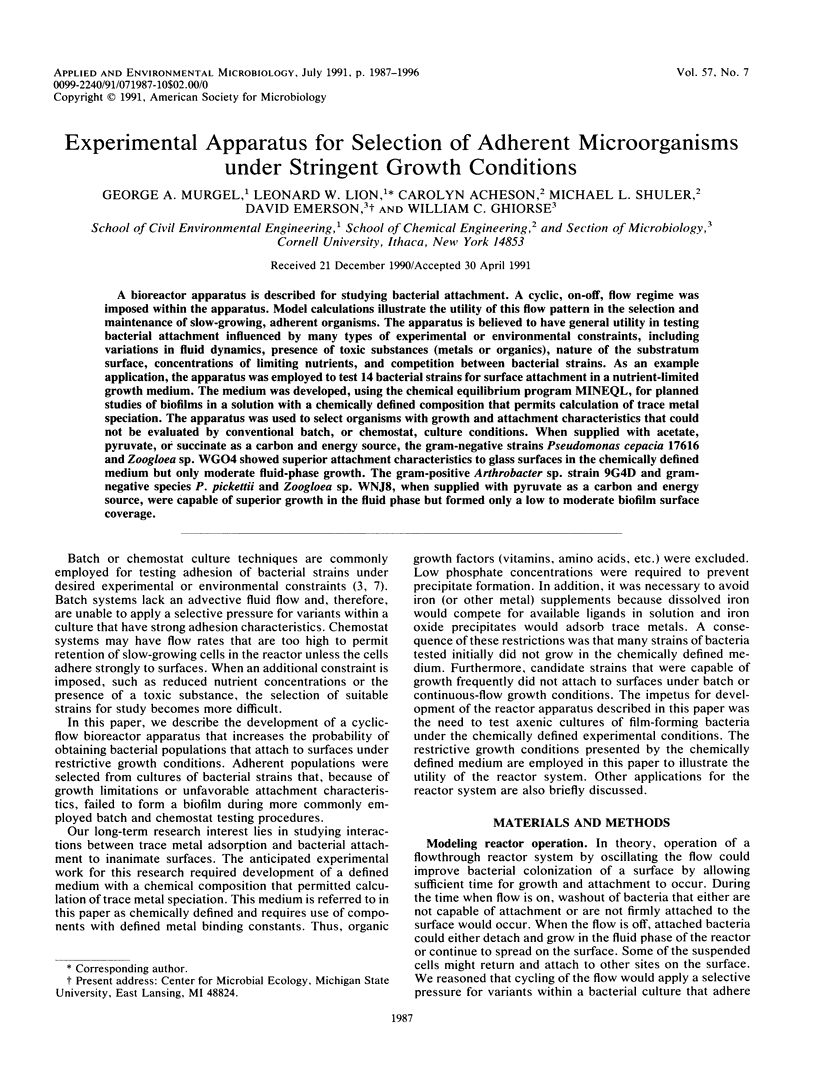
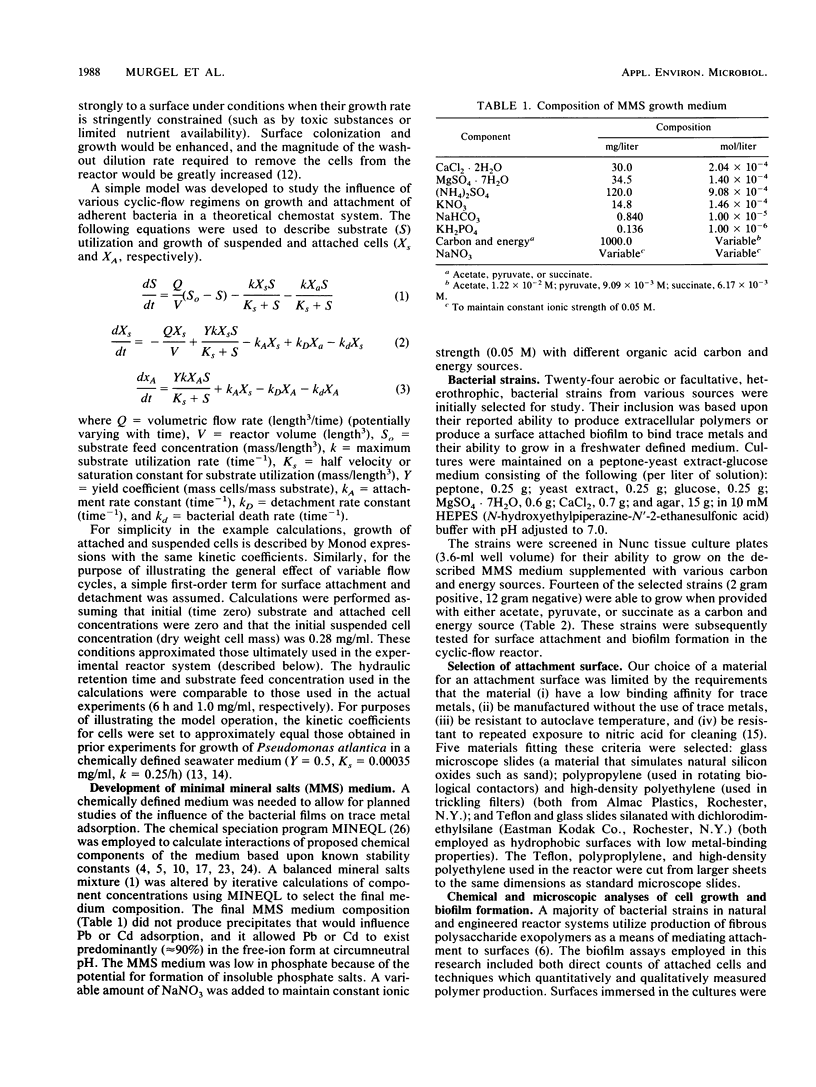
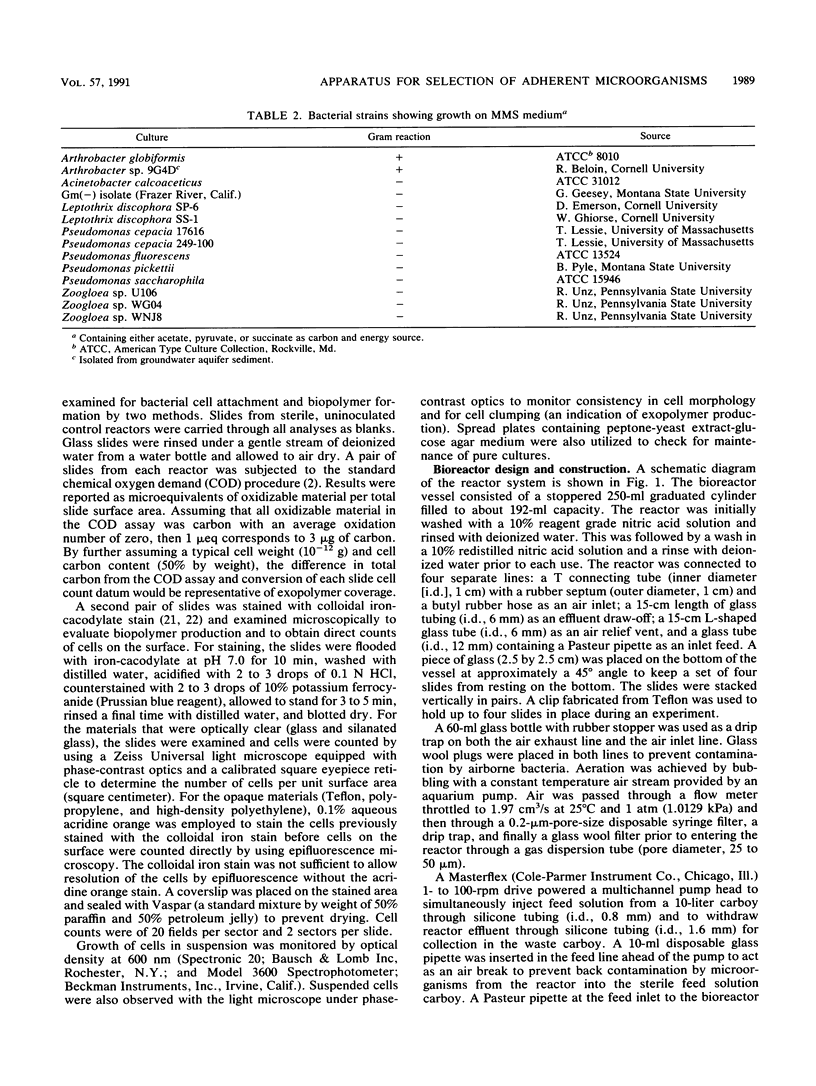
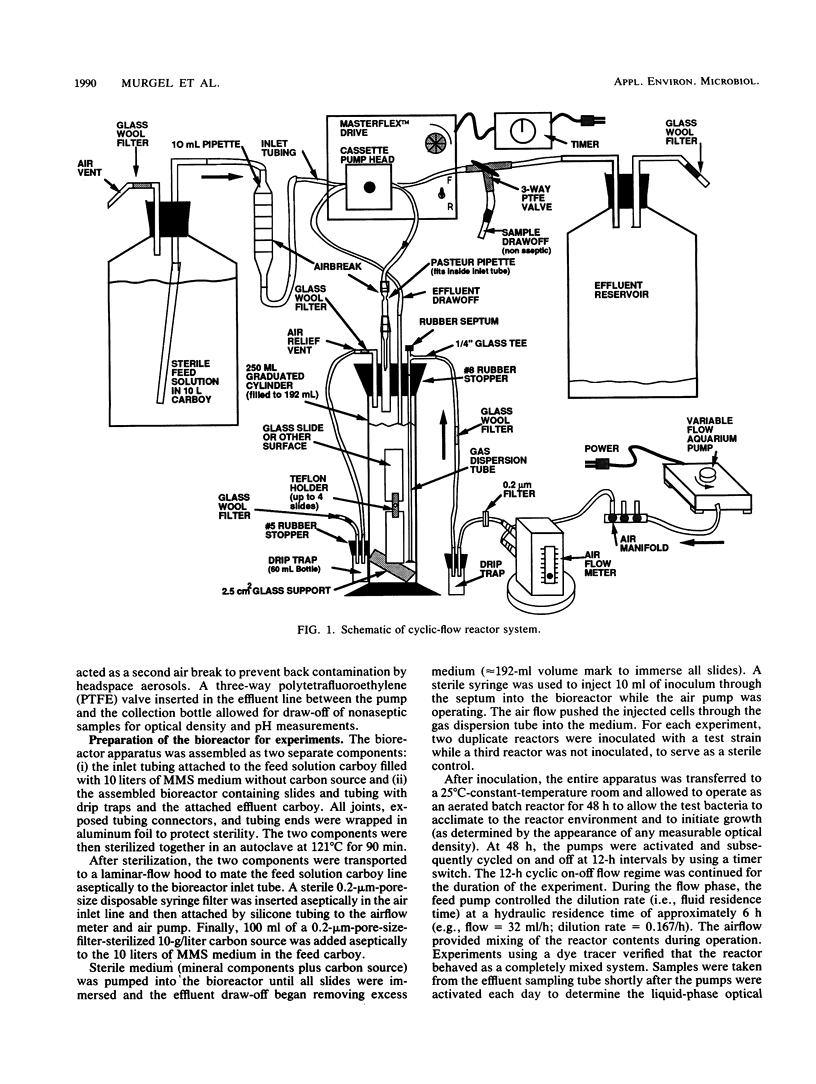
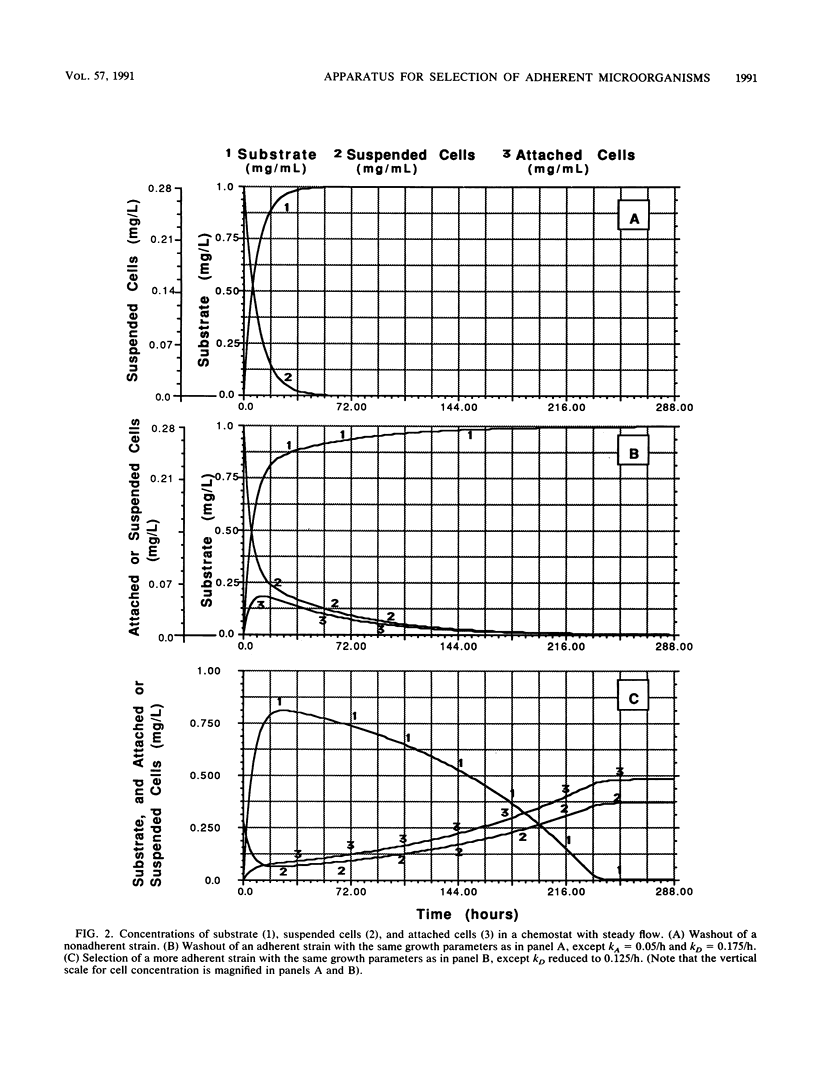
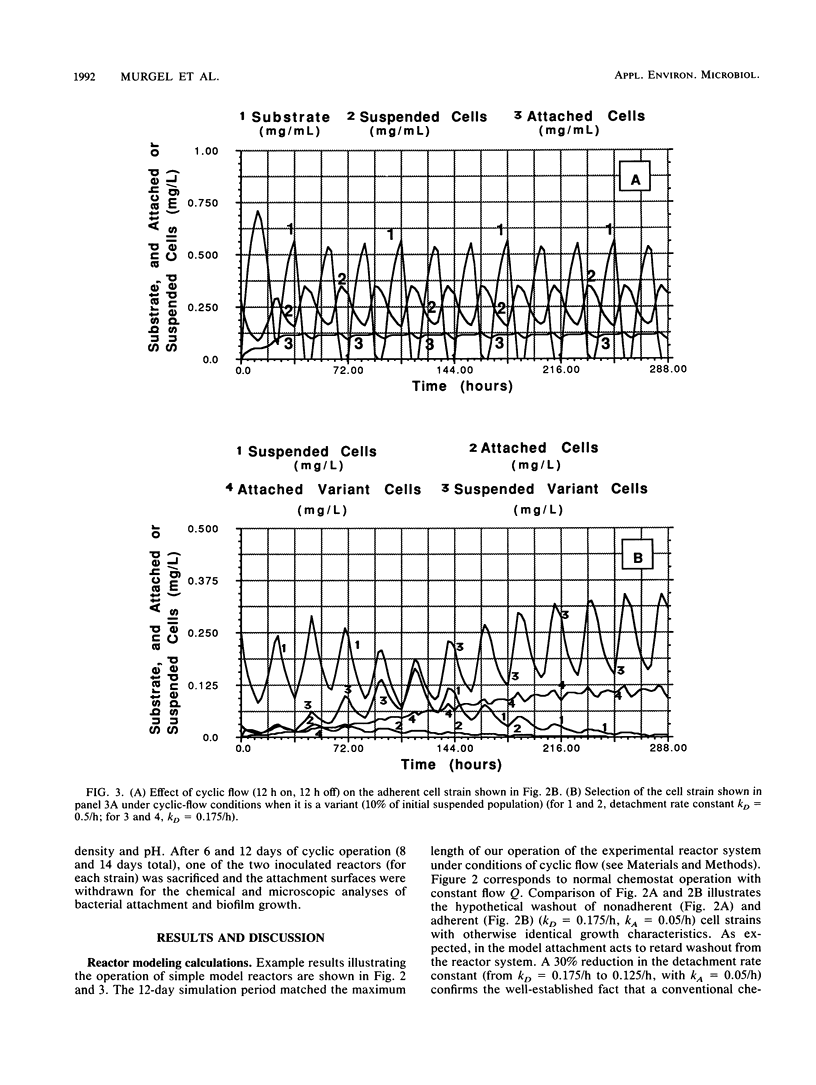
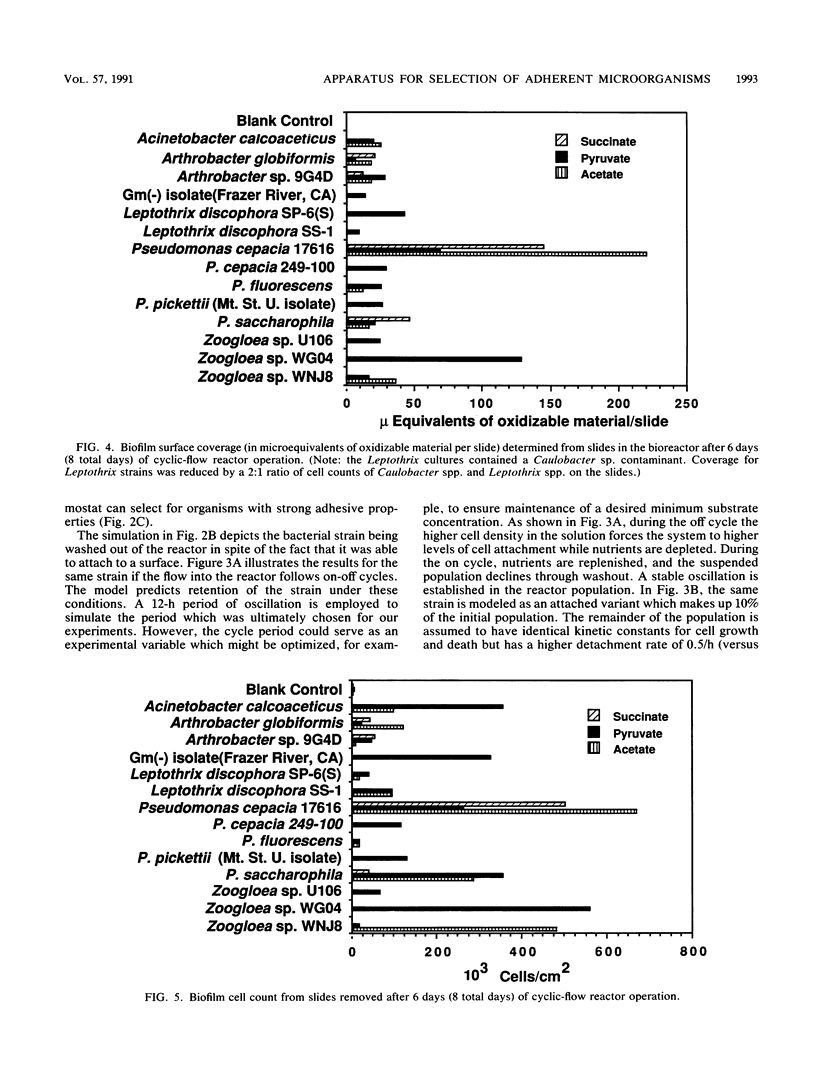
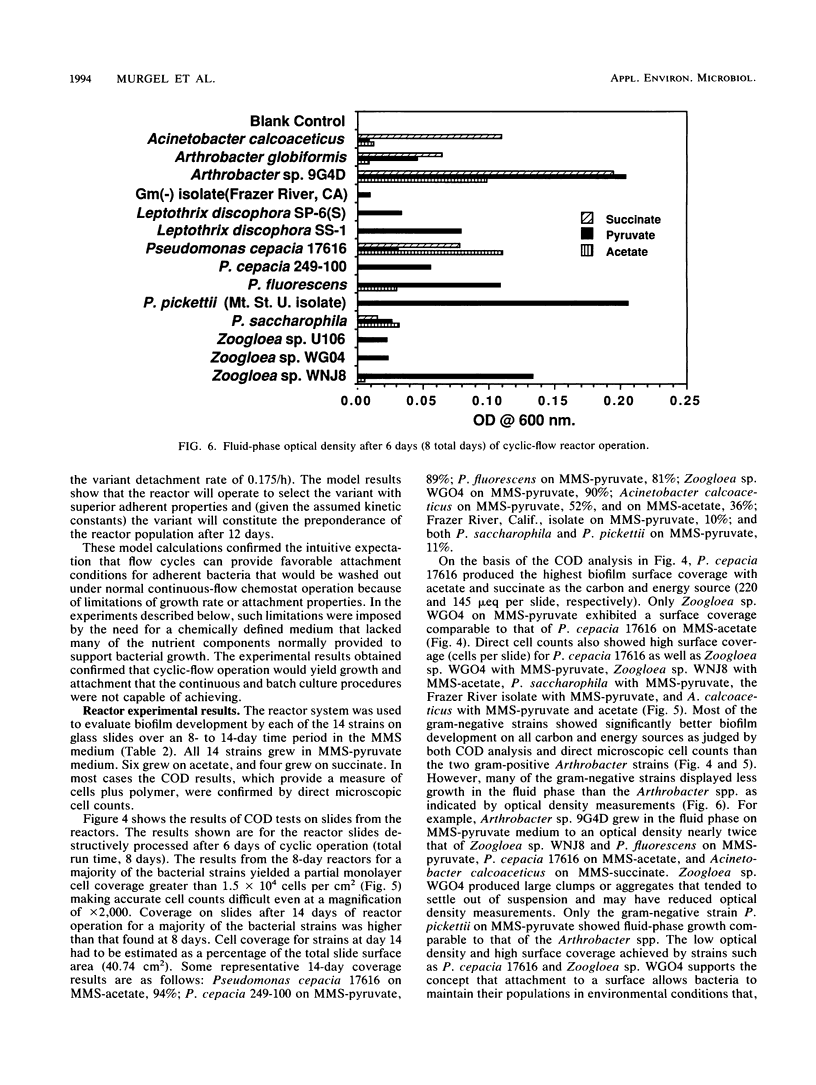
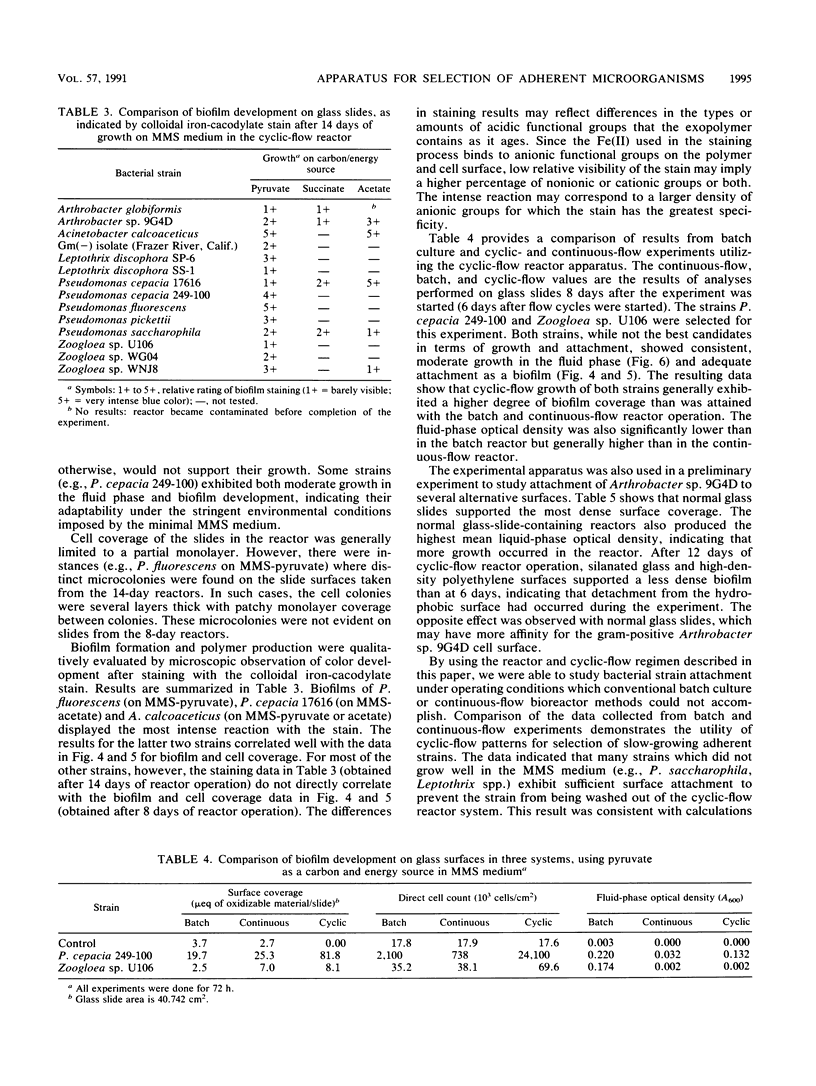
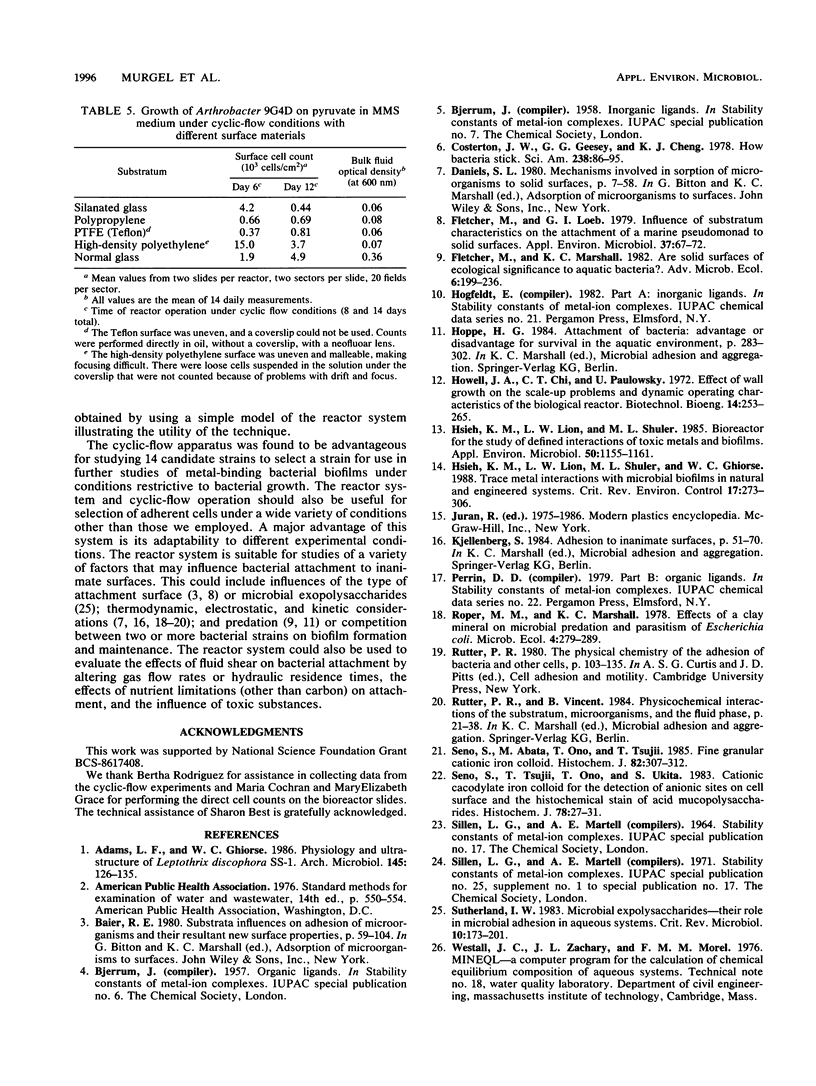
Selected References
These references are in PubMed. This may not be the complete list of references from this article.
- Costerton J. W., Geesey G. G., Cheng K. J. How bacteria stick. Sci Am. 1978 Jan;238(1):86–95. doi: 10.1038/scientificamerican0178-86. [DOI] [PubMed] [Google Scholar]
- Fletcher M., Loeb G. I. Influence of substratum characteristics on the attachment of a marine pseudomonad to solid surfaces. Appl Environ Microbiol. 1979 Jan;37(1):67–72. doi: 10.1128/aem.37.1.67-72.1979. [DOI] [PMC free article] [PubMed] [Google Scholar]
- Hsieh K. M., Lion L. W., Shuler M. L. Bioreactor for the study of defined interactions of toxic metals and biofilms. Appl Environ Microbiol. 1985 Nov;50(5):1155–1161. doi: 10.1128/aem.50.5.1155-1161.1985. [DOI] [PMC free article] [PubMed] [Google Scholar]
- Seno S., Akita M., Ono T., Tsujii T. Fine-granular cationic iron colloid. Its preparation, physicochemical characteristics and histochemical use for the detection of ionized anionic groups. Histochemistry. 1985;82(4):307–312. doi: 10.1007/BF00494058. [DOI] [PubMed] [Google Scholar]
- Seno S., Tsujii T., Ono T., Ukita S. Cationic cacodylate iron colloid for the detection of anionic sites on cell surface and the histochemical stain of acid mucopolysaccharides. Histochemistry. 1983;78(1):27–31. doi: 10.1007/BF00491108. [DOI] [PubMed] [Google Scholar]
- Sutherland I. W. Microbial exopolysaccharides -- their role in microbial adhesion in aqueous systems. Crit Rev Microbiol. 1983;10(2):173–201. doi: 10.3109/10408418209113562. [DOI] [PubMed] [Google Scholar]


